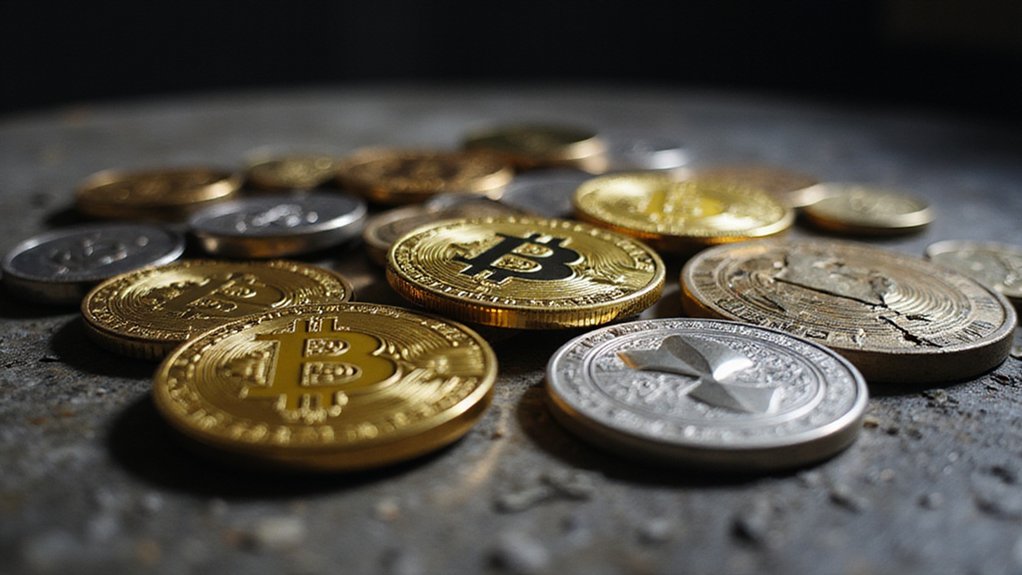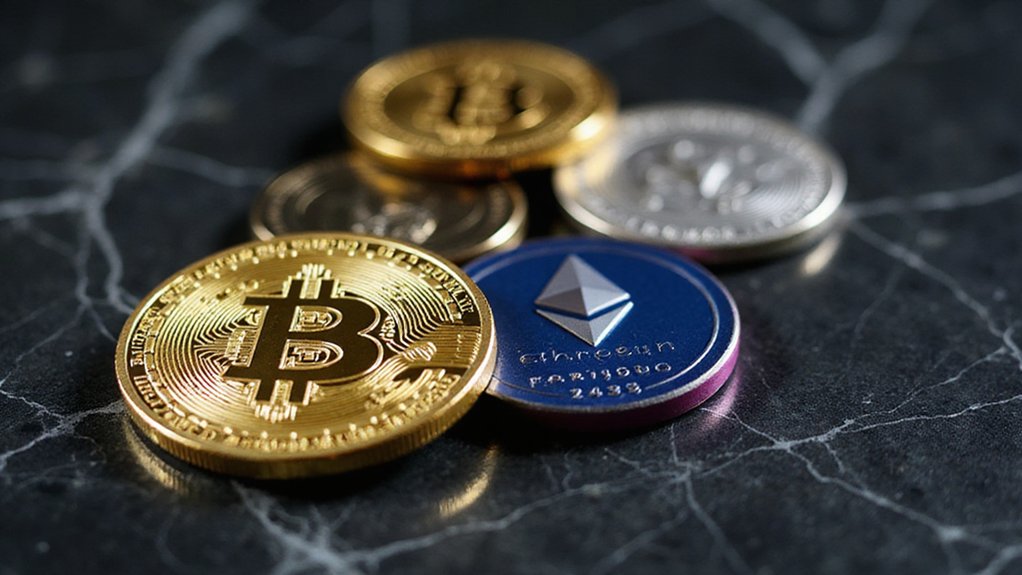The great digital gold rush, it seems, has left a trail of battered altcoins in its wake as Bitcoin’s dominance surges to 65%—a figure that would make traditional monopolists blush with envy.
While investors once celebrated cryptocurrency diversification as the pinnacle of modern portfolio management, they’re now witnessing what happens when the safe haven narrative collides with market reality.
Bitcoin’s ascension to a $2 trillion market capitalization has created an gravitational pull so strong that altcoins appear to be losing their orbital stability.
Bitcoin’s trillion-dollar gravitational force is pulling altcoins out of their financial orbits into systematic devaluation.
The “digital gold” moniker, once shared liberally among various cryptocurrencies, has seemingly consolidated around Bitcoin alone—leaving projects like Solana and XRP to maintain significant market caps while their broader cohort experiences what can only be described as systematic devaluation. Despite this broader decline, some altcoins with substantial market caps have managed significant gains year-to-date in 2025.
Economic headwinds have exposed the uncomfortable truth about altcoin resilience (or lack thereof).
When inflation fears grip traditional markets and central banks adjust monetary policies with the subtlety of a sledgehammer, investors demonstrate a curious tendency to flee toward perceived stability. Bitcoin, having survived multiple market cycles, benefits from this flight to quality—though calling any cryptocurrency “stable” requires considerable mental gymnastics.
The regulatory environment compounds these pressures, affecting smaller market cap altcoins with disproportionate severity.
Regulatory uncertainty functions like a stress test that many altcoins seem destined to fail, their volatility amplified by investor caution and reduced liquidity. Meanwhile, Bitcoin’s market leadership position provides a psychological buffer that smaller projects simply cannot replicate. Solana’s impressive processing capacity of over 4,000 transactions per second showcases technological advancement, yet fails to shield it from broader market pressures.
Perhaps most tellingly, the diversification strategy that once drove altcoin adoption now appears to be working in reverse.
Instead of spreading risk across multiple digital assets, investors are consolidating positions in Bitcoin—treating it as the cryptocurrency equivalent of blue-chip equity. This shift reflects not just changing market sentiment, but a fundamental reassessment of what constitutes digital value storage. Stablecoins are increasingly viewed as the potential future for retail payments, offering a bridge between traditional finance and the crypto ecosystem while maintaining price stability.
The altcoin decline reveals how quickly market narratives can shift when economic pressure tests theoretical frameworks.
What once seemed like a diverse ecosystem of digital assets increasingly resembles a winner-take-most scenario, with Bitcoin capturing not just market share, but the entire safe haven narrative that once seemed large enough for multiple participants.









